Schizophrenia is a complex mental disorder that requires comprehensive assessment and care planning. This article explores the essential assessment, nursing diagnosis, goals, interventions for schizophrenia and offers practical guidance on how to manage this condition effectively.
What is Schizophrenia?
Schizophrenia refers to a group of severe, disabling psychiatric disorders marked by withdrawal from reality, illogical thinking, possible delusions and hallucinations, and emotional, behavioral, or intellectual disturbance. Traditionally, symptoms have been divided into two main categories: positive symptoms, which include hallucinations, delusions, and formal thought disorders, and negative symptoms such as anhedonia, poverty of speech, and lack of motivation (Hany et al., 2023).
The diagnosis of schizophrenia is clinical, made exclusively after obtaining a full psychiatric history and excluding other causes of psychosis (Hany et al., 2023). The most common early warning signs of schizophrenia are usually detected until adolescence. These include depression, social withdrawal, unable to concentrate, hostility or suspiciousness, poor expressions of emotions, insomnia, lack of personal hygiene, or odd beliefs.
According to the Diagnostic and Statistical Manual of Mental Disorders 5 (DSM-5), two or more of the following symptoms must be present for a significant portion of time during a one-month period:
- Delusions
- Hallucinations
- Disorganized speech
- Grossly disorganized or catatonic behavior
- Negative symptoms
There are at least two sets of risk factors for schizophrenia: genetic and perinatal.
- Genetic. The risk of schizophrenia is elevated in biological relatives of persons with schizophrenia but not in adopted relatives. The risk of schizophrenia in first-degree relatives of persons with schizophrenia is 10%. If both parents have schizophrenia, the risk of their child is 40% (Frankenburg & Xiong, 2021).
- Perinatal factors. Women who are malnourished or who have certain viral illnesses during pregnancy may be at greater risk of giving birth to children who later develop schizophrenia. Obstetric complications may also be associated with a higher incidence of schizophrenia. Children born in the winter months may be at greater risk for developing schizophrenia (Frankenburg & Xiong, 2021).
The American Psychiatric Association (APA) removed schizophrenia subtypes from the DSM-5 because they did not appear to be helpful for providing better-targeted treatment or predicting treatment response (Frankenburg & Xiong, 2021).
Nursing Care Plans and Management
Nursing care plans and management for schizophrenia involve recognizing schizophrenia, assessing positive and negative symptoms, establishing trust and rapport, reducing symptoms, enhancing communication, maximizing the level of functioning, improving social functioning, developing coping strategies, promoting medication compliance, and evaluating the support system.
Nursing Problem Priorities
The following are the nursing priorities for patients with schizophrenia:
- Establish therapeutic rapport and trust
- Monitor and manage symptoms
- Administer antipsychotic medications
- Provide education and support
- Assist with daily living skills
- Collaborate with interdisciplinary team
- Ensure a safe environment
Nursing Assessment
Assess for the following subjective and objective data:
- Positive symptoms of schizophrenia:
- Delusions – Persistent false beliefs
- Hallucinations – Sensory experiences without external stimuli
- Disorganized thinking – Incoherent or illogical thought processes
- Abnormal motor behavior – Unusual or unpredictable movements
- Negative symptoms of schizophrenia:
Nursing Diagnosis
Following a thorough assessment, a nursing diagnosis is formulated to specifically address the challenges associated with schizophrenia based on the nurse’s clinical judgment and understanding of the patient’s unique health condition. While nursing diagnoses serve as a framework for organizing care, their usefulness may vary in different clinical situations. In real-life clinical settings, it is important to note that the use of specific nursing diagnostic labels may not be as prominent or commonly utilized as other components of the care plan. It is ultimately the nurse’s clinical expertise and judgment that shape the care plan to meet the unique needs of each patient, prioritizing their health concerns and priorities.
Nursing Goals
Goals and expected outcomes may include:
- The client will express thoughts and feelings in a coherent, logical, goal-directed manner.
- The client will demonstrate reality-based thought processes in verbal communication.
- The client will spend time with one or two other people on structured activity-neutral topics.
- The client will spend two to three five-minute sessions with the nurse sharing observations in the environment within three days.
- The client will be able to communicate in a manner that can be understood by others with the help of medication and attentive listening by the time of discharge.
- The client will learn one or two diversionary tactics that work for him/her to decrease anxiety, hence improving the ability to think clearly and speak more logically.
- The client will maintain interaction with another client while doing an activity (e.g., a simple board game, or drawing).
- The client will demonstrate interest to start coping skills training when ready for learning.
- The client will engage in one or two activities with minimal encouragement from the nurse or family members.
- The client will state that he or she is comfortable in at least three structured activities that are goal-directed.
- The client will learn ways to refrain from responding to hallucinations..
- The client will state that the voices are no longer threatening, nor do they interfere with his or her life.
- The client will state, using a scale from 1 to 10, that “the voices” are less frequent and threatening when aided by medication and nursing intervention.
- The client will identify personal interventions that decrease or lower the intensity or frequency of hallucinations (e.g., listening to music, wearing headphones, reading out loud, jogging, and socializing).
- The client will demonstrate techniques that help distract him or her from the voices.
- The client remains free from injury as evidenced by the absence of wounds and abrasions.
- The client will develop trust in at least one staff member within one week.
- The client will sustain attention and concentration to complete tasks or activities.
- The client will state that the “thoughts” are less intense and less frequent with the help of medications and nursing interventions.
- The client will talk about concrete happenings in the environment without talking about delusions for five minutes.
- The client will demonstrate two effective coping skills that minimize delusional thoughts.
- The client will be free from delusions or demonstrate the ability to function without responding to persistent delusional thoughts.
- The client will demonstrate learn the ability to remove himself or herself from situations when anxiety begins to increase with the aid of medications and nursing interventions.
- The client will demonstrate decreased suspicious behaviors regarding interaction with others.
- The client will be able to apply a variety of stress/anxiety-reducing techniques on their own.
- The client will acknowledge that medications will lower suspiciousness.
- The client will state that he/she feels safe and more in control with interactions with the environment/family/work/social gatherings.
- The family and/or significant others will recount in some detail the early signs and symptoms of relapse in their ill family member, and know whom to contact in case.
- The family and/or significant others will state and have written information identifying the signs of potential relapse and whom to contact before discharge.
- The family and/or significant others will state that they have received needed support from community and agency resources that offer education, support, coping skills training, and/or social network development (psychoeducational approach).
- The family and/or significant others will state what medications can do for their ill family member, the side effects and toxic effects of the drugs, and the need for adherence to medication at least 2 to 3 days before discharge.
- The family and/or significant others will name and have a complete list of community supports for ill family members and supports for all members of the family at least 2 days before the discharge.
- The family and/or significant others will attend at least one family support group (single family, multiple families) within 4 days from the onset of the acute episode.
- The family and/or significant others will meet with the nurse/physician/social worker on the first day of hospitalization and begin to learn about neurologic/biochemical disease, treatment, and community resources.
- The family and/or significant others will problem-solve, with the nurse, two concrete situations within the family that all would like to discharge.
- The family and/or significant others will recount in some detail the early signs and symptoms of relapse in their ill family member, and know whom to contact.
- The family and/or significant others will demonstrate problem-solving skills for handling tensions and misunderstandings among the family member.
- The family and/or significant others will have access to family/multiple family support groups and psycho-educational training.
Nursing Interventions and Actions
Therapeutic interventions and nursing actions for patients with schizophrenia may include:
1. Promoting Client Safety
Clients with schizophrenia are prone to injury due to auditory and visual hallucinations caused by abnormalities in the brain‘s processing of sensory information. These hallucinations can be distressing and interfere with the client’s ability to function in daily life. These clients may have difficulty distinguishing between reality and their hallucinations, leading to further confusion and disorientation. Clients diagnosed with schizophrenia also have a risk of substance abuse and violence, which can also result in injuries to the client or to others around them.
Be alert for signs of increasing fear, anxiety, or agitation.
This might herald hallucinatory activity, which can be very frightening to the client, and the client might act upon command hallucinations (harm self or others). A few clients may act violently as a result of command hallucinations or delusions, or the violence may be associated with substance abuse. These violent acts are often highly publicized, and the intense publicity has the unfortunate consequence of exacerbating the stigma of the disease (Frankenburg & Xiong, 2021).
Explore how the hallucinations are experienced by the client.
Exploring the hallucinations and sharing the experience can help give the person a sense of power that he or she might be able to manage the commanding, hallucinatory voices. One of the paradoxical features of self in schizophrenia is that the I is neither fully oneself nor another, but an in-between state between pure observation (passivity) and participation, The client might experience a vicious circle in which phases of psychosis feed into and reinforce each other (Humpston & Broome, 2020).
Assess for the potential of substance abuse.
Alcohol and drug abuse are common in schizophrenia, for reasons that are not entirely clear. For some people, these drugs provide relief from symptoms of the illness or the adverse effects of antipsychotic drugs, and the drive for this relief is strong enough to allow even clients who are impoverished and disorganized to find substances to abuse (Frankenburg & Xiong, 2021).
Observe for obsessive-compulsive symptoms.
A number of clients with schizophrenia display obsessive-compulsive symptoms, such as the need to check, count, or repeat certain activities. Obsessive-compulsive symptoms are a known adverse effect of some antipsychotic medications, particularly clozapine (Frankenburg & Xiong, 2021).
Help the client to identify the needs that might underlie the hallucination. What other ways can these needs be met?
Hallucinations might reflect needs for anger, power, self-esteem, and sexuality. Clients diagnosed with schizophrenia revealed in a study that sometimes when they have a problem that is a burden on their minds they tend to want to tell their problems to family members. However, they are afraid to tell their family members because they feel that when they tell them their problems, their family members will also be burdened by the problem. Thus, clients choose to keep their problems to themselves (Siregar et al., 2021).
Accept the fact that the voices are real to the client, but explain that you do not hear the voices. Refer to the voices as “your voices” or “voices that you hear”.
Validating that your reality does not include voices can help the client cast “doubt” on the validity of his or her voice. Do not argue with the hallucinations or deluded observations of the client. Instead, explain to the client that you each have your own perceptions of the world; do not focus on correcting their negative thoughts or encouraging their distorted reality (Smith & Bressler, 2022).
Help the client identify times when the hallucinations are most prevalent and frightening.
This helps both nurse and client identify situations and times that might be most anxiety-producing and threatening to the client. Complications occur when the hallucinations command the client to hurt themselves or others. The paracusia, perceived as coming through the ears, on the surface of the body, in the mind, or anywhere in an external space, can also be so self-deprecating that they cause the client to attempt suicide (Thakur & Gupta, 2023).
- If voices tell the client to harm themself or others, take necessary environmental precautions.
- Notify others and police, physician, and administration according to unit protocol.
- If in the hospital, use unit protocols for suicide or threats of violence if the client plans to act on commands.
- If in the community, evaluate the need for hospitalization.
In many cases, swift, decisive intervention can prevent a person from committing suicide or harming others. Because of this preventable aspect of suicide, recognizing and taking action if the potential arises is critical. Based on the clinical assessment and all of the information available, if the person is indeed suicidal or homicidal, the intervention should consist of multiple steps (Soreff & Xiong, 2022).
Clearly document what the client says, and if he/she is a threat to others, document who was contacted and notified (use agency protocol as a guide).
People often obey hallucinatory commands to kill themselves or others. Early assessment and intervention might save lives. A clear and complete evaluation and clinical interview provide the information upon which to base a suicide intervention. Suicidal ideation is highly linked to completed suicide. If suicidal ideation is present, the next question must be about any plans for suicidal acts (Soreff & Xiong, 2022)s.
Stay with clients when they are starting to hallucinate and direct them to tell the “voices they hear” to go away. Repeat often in a matter-of-fact manner.
The client can sometimes learn to push voices aside when given repeated instructions. especially within the framework of a trusting relationship. The individual must not be left alone. In the emergency department, such a recommendation is handled easily by hospital security personnel. In other settings, summon assistance quickly. Involve family or friends; they can remain with the client while treatment arrangements are made (Frankenburg & Xiong, 2021).
Decrease environmental stimuli when possible (low noise, minimal activity).
This decreases the potential for anxiety that might trigger hallucinations and helps calm the client. Stress and anxiety can trigger or worsen hallucinations, delusions, and other symptoms, leading to increased distress and impaired functioning. Creating a calm environment can reduce sensory overload, providing a stable and predictable atmosphere that can help the client manage their symptoms more effectively.
Intervene with one-on-one, seclusion, or PRN medication (As ordered) when appropriate.
Intervene before anxiety begins to escalate. If the client is already out of control, use chemical or physical restraints following unit protocols. The suicidal client should be treated initially in a secure, safe, and highly supervised place. Inpatient care at a hospital offers one of the best settings. Most managed care companies recognize the medical necessity of hospitalization in situations in which the suicide danger is acute (Soreff & Xiong, 2022).
Keep to simple, basic, reality-based topics of conversation. Help the client focus on one idea at a time.
The client’s thinking might be confused and disorganized; this intervention helps the client focus and comprehend reality-based issues. The client may also show thought blocking, in which long pauses occur before they answer a question. The client has little insight into their problems, therefore, reinforcing reality is necessary (Frankenburg & Xiong, 2021).
Work with the client to find which activities help reduce anxiety and distract the client from hallucinatory material. Practice new skills with the client.
If clients’ stress triggers hallucinatory activity, they might be more motivated to find ways to remove themselves from a stressful environment or try distraction techniques. Engaging the client in vocational and art therapy can improve self-esteem and help integrate their functioning (Thakur & Gupta, 2023).
Engage the client in reality-based activities such as card playing, writing, drawing, doing simple arts and crafts, or listening to music.
Redirecting the client’s energies to acceptable activities can decrease the possibility of acting on hallucinations and help distract from voices. The nurse should remember that the activity has to be within the client’s functioning level. Some activities to consider are drawing, reading, listening to music, or walking. These are activities in the “here and now”. Keeping the client focused on reality-based activities is important in helping them cope with these symptoms (Madick, 2022).
Administer clozapine, as indicated.
See Pharmacologic Management
Arrange referrals for a dual-diagnosis treatment program for a client with substance abuse.
Clients who abuse substances may fare better in dual-diagnosis treatment programs, in which principles from the mental health field can be integrated with principles from the chemical dependency field (Frankenburg & Xiong, 2021).
Remove all dangerous objects in the client’s room.
Remove anything that the client may use to hurt or kill themselves. Remove sharp or potentially dangerous objects. Ask the client for any weapon, such as knives or pills, and secure them away from the client. Removal of ligature points (places where things like ropes could be attached) is associated with significant reductions in the overall psychiatric inpatient suicide rate and in the rate of inpatient suicide by hanging (Frankenburg & Xiong, 2021).
Prepare the client for cognitive behavioral therapy (CBT).
A study of brief CBT in a cohort of active-duty military personnel who either attempted suicide or experienced suicidal ideation found the treatment effective in preventing follow-up suicide attempts. Data showed that soldiers treated with brief CBT were approximately 60% less likely to attempt suicide than soldiers who did not receive the therapy (Soreff & Xiong, 2022).
2. Establishing Therapeutic Relationships and Promoting Therapeutic Communication
Establishing a therapeutic relationship and promoting communication with patients with schizophrenia involves creating a safe and non-judgmental environment where the individual feels comfortable expressing themselves. Active listening, empathy, and validating their experiences can foster trust and encourage open communication. Using clear and simple language, providing visual aids if necessary, and allowing ample time for the patient to process information can enhance understanding and facilitate effective communication.
Assess if incoherence in speech is chronic or if it is more sudden, as in an exacerbation of symptoms.
Establishing a baseline facilitates the establishment of realistic goals, the foundation for planning effective care. In measuring disorganized speech, communication impairment focuses on the communication failures in speech, rather than the underlying thought disorder. Communication impairment can be assessed very sensitively and reliably and has been found to be elevated in first-degree relatives of people with schizophrenia (Merrill et al., 2017).
Identify the duration of the psychotic medication of the client.
Therapeutic levels of an antipsychotic aid clear thinking and diminishes derailment or looseness of association. The client may be calmer and less agitated almost immediately during the beginning of antipsychotic medications, but the alleviation of the psychosis itself takes several weeks (Frankenburg & Xiong, 2021).
Measure the extent of the client’s communication impairment by the Communication Disturbances Index (CDI).
One conceptualization of disorganized speech is communication impairment, which refers to frequent instances of significant speech unclarity and is typically measured by the CDI. the CDI rates speech based on the occurrence of language that fails to communicate the intended message through unclear references or grammatical disturbances (Merrill et al., 2017).
Look for themes in what is said, even though spoken words appear incoherent (e.g., fear, sadness, guilt).
Often the client’s choice of words is symbolic of feelings. The client’s speech may be difficult to follow because of the looseness of his or her associations; the sequence of thoughts follows a logic that is clear to the client but not to the interviewer. The speech may be circumstantial (the client takes a long time and uses many words in answering a question) or tangential (the client speaks at length but never actually answers the question) (Frankenburg & Xiong, 2021).
Keep the voice in a low manner and speak slowly as much as possible.
A high-pitched/loud tone of voice can elevate anxiety levels while slow speaking aids understanding. Emotions are subjective feelings about an event. The way the person communicates and relates with others is influenced by his or her emotional state. Emotions such as sadness, anxiety, anger, and fear affect health workers’ communication with others (Siregar et al., 2021).
Keep the environment calm, quiet, and as free of stimuli as possible.
A calm environment helps keep anxiety from escalating and increasing confusion and hallucinations/delusions. Stress and anxiety can trigger or worsen hallucinations, delusions, and other symptoms, leading to increased distress and impaired functioning. Creating a calm environment can reduce sensory overload, providing a stable and predictable atmosphere.
Plan short, frequent periods with a client throughout the day.
Short periods are less stressful, and periodic meetings give a client a chance to develop familiarity and safety. Clients with schizophrenia may struggle with organization and planning. A structured, short period of activity can help the client manage their daily activities and self-care routines.
Use clear or simple words, and keep directions simple as well.
The client might have difficulty processing even simple sentences. The client may show thought blocking, in which long pauses occur before he or she answers a question. The client’s thoughts may also be disorganized, stereotyped, or perseverative (Frankenburg & Xiong, 2021).
Use simple, concrete, and literal explanations.
Minimizes misunderstanding and/or incorporates those misunderstandings into delusional systems. The client also has difficulty with abstract thinking, demonstrated by the inability to understand common proverbs or idiosyncratic interpretations of them (Frankenburg & Xiong, 2021).
Focus on and direct the client’s attention to concrete things in the environment.
This helps draw focus away from delusions and focus on reality-based things. Don not focus on correcting their psychotic thinking or encourage their distorted reality. Emphasize that you are there as a support and can get help if need be. Reinforce reality by expressing that each has its own perceptions of the world (Smith & Bressler, 2022).
When you do not understand a client, let him/her know you are having difficulty understanding.
Pretending to understand limits your credibility in the eyes of your client and lessens the potential for trust. Do not argue with the hallucinations or deluded observations. It is not useful to challenge the person who is struggling. Instead, refrain from being judgemental and work to stay engaged with the client (Smith & Bressler, 2022).
When the client is ready, introduce strategies that can minimize anxiety and lower voices, and “worrying” thoughts, and teach the client to do the following:
- Focus on meaningful activities.
- Learn to replace negative thoughts with constructive thoughts.
- Learn to replace irrational thoughts with rational statements.
- Perform deep breathing exercises.
- Read aloud to self.
- Seek support from staff, family, or other supportive people.
- Use a calming visualization or listen to music.
Helping the client to use tactics to lower anxiety can help enhance functional speech. People with schizophrenia will experience cognitive, emotional, perceptual, and behavioral disturbances. Distortion of negative thoughts that appear in schizophrenic clients can trigger mental stress, resulting in anxiety, depression, or even an urge to commit suicide. This is a consequence that must be avoided at all costs (Siregar et al., 2021).
Use therapeutic techniques (clarifying feelings when speech and thoughts are disorganized) to try to understand the client’s concerns.
Even if the words are hard to understand, try getting to the feelings behind them. Therapeutic communication is consciously planned communication, aims, and activities centered on the client’s recovery. In this relationship, the client feels valued, accepted, and directed. Clients will voluntarily express their feelings and thoughts so that the emotional burden and tension they feel can disappear entirely and return to normal (Siregar et al., 2021).
Establish rapport and build a trusting relationship with the client.
Trust is needed to build effective communication between nurses and clients. This variable occurs in the implementation of therapeutic communication at each phase. The trust built from the start creates a sense of comfort and creates a therapeutic environment. Building a trusting relationship will make the relationship smoother going forward because the client and the nurse are more open about the problems they face (Siregar et al., 2021) (Siregar et al., 2021).
Provide positive feedback and appreciation to the client.
Praise given to clients when they do something positive is considered more valuable. With sincere appreciation, clients will feel valued and cared for. Giving appreciation is a form of reward for clients. This can be done during the work and termination phases of the nurse-client relationship (Siregar et al., 2021).
Assess if the medication has reached therapeutic levels.
Many of the positive symptoms of schizophrenia (hallucinations, delusions, racing thoughts) will subside with medications, which will facilitate interactions. Study data showed that the long-acting injectable (LAI) antipsychotic formulation of risperidone proved superior to oral risperidone on measures of relapse and symptom control. It also provided better control of hallucinations and delusions (Frankenburg & Xiong, 2021).
Identify with the client the symptoms he experiences when he or she begins to feel anxious around others.
Increased anxiety can intensify agitation, aggressiveness, and suspiciousness. Many clients with schizophrenia report symptoms of anxiety. It is unclear whether such anxiety is an independent problem, part of schizophrenia, a reaction to schizophrenia, or a complication of treatment. Anxiety may precede the onset of schizophrenia for several years (Frankenburg & Xiong, 2021).
Keep the client in an environment as free of stimuli (loud noises, crowding) as possible.
The client might respond to noises and crowding with agitation, anxiety, and an increased inability to concentrate on outside events. A calm environment can be an essential component of treatment for clients with schizophrenia. It can help reduce stress and anxiety, provide a sense of safety and security, and provide structure and routine, all of which can help the client manage their symptoms more effectively and lead to better outcomes.
Avoid touching the client.
Touch by an unknown person can be misinterpreted as a sexual or threatening gesture. This is particularly true for a paranoid client. It appears that some social processing systems are intact or largely intact in schizophrenia, whereas others are clearly impaired. For example, social cue recognition, the ability to process a diverse array of social cues from faces, voices, and body movements, is impaired ins schizophrenia (Green et al., 2018).
Ensure that the goals set are realistic; whether in the hospital or community.
This avoids pressure on the client and a sense of failure on the part of the nurse/family. This sense of failure can lead to a mutual withdrawal. If goals are set too high or unrealistic, the client may become frustrated and discouraged, leading to decreased motivation and engagement in treatment. Achieving goals, even small ones, can help the client feel a sense of accomplishment and increase their confidence and motivation.
Structure activities that work at the client’s pace and activity.
The client can lose interest in activities that are too ambitious, which can increase a sense of failure. Motivation refers to what people are willing to do and includes the direction, intensity, and persistence of goal-directed behavior (Green et al., 2018).
Structure times each day to include planned times for brief interactions and activities with the client on a one-on-one basis
This helps the client to develop a sense of safety in a non-threatening environment. The problems of social motivation in schizophrenia can stem from disturbances in either type of motivational drive. For example, those with prominent clinically rated asociality show diminished social approach motivation and a lack of motivation to seek out social interactions. However, others show elevated social avoidance in that they are interested in social connections but do not attempt to engage due to fear of rejection (Green et al., 2018).
If the client is unable to respond verbally or in a coherent manner, spend frequent, short periods with clients.
An interested presence can provide a sense of being worthwhile. Clients with schizophrenia may experience social isolation due to the stigma associated with the disorder or the symptoms they experience. The quiet presence of the nurse can provide a social connection for clients, helping them feel less alone.
If the client is found to be very paranoid, solitary or one-on-one activities that require concentration are appropriate.
The client is free to choose his level of interaction; however, concentration can help minimize distressing paranoid thoughts or voices. Most clients with schizophrenia may act violently as a result of command hallucinations or delusions. Engaging in short periods of cognitive activity, such as playing a game, reading a book, or doing a puzzle, can help improve cognitive function and enhance overall mental health.
If the client is delusional/hallucinating or is having trouble concentrating at this time, provide very simple concrete activities with the client (e.g., looking at a picture or doing a painting).
Even simple activities help draw clients away from delusional thinking into reality in the environment. Art therapy activities such as coloring or drawing can help the client improve their concentration and reduce stress. Encourage them to choose a simple coloring book or sketch pad and focus on the colors and shapes as they create.
If the client is very withdrawn, one-on-one activities with a “safe” person initially should be planned.
Learn to feel safe with one person, then gradually might participate in a structured group activity. Many clients with schizophrenia report symptoms of depression. It is unclear whether such depression is an independent problem, part of schizophrenia, a reaction to schizophrenia, or a complication of treatment. Addressing this issue is important because of the high rate of suicide among these clients (Frankenburg & Xiong, 2021).
Try to incorporate the strengths and interests the client had when not as impaired into the activities planned.
This increases the likelihood of the client’s participation and enjoyment. By focusing on the things that the client enjoys and is good at, the nurse can help them feel more motivated and engaged in their treatment. This can increase their overall satisfaction with the therapy and may lead to better outcomes.
Teach the client to remove himself briefly when feeling agitated and work on some anxiety relief exercises (e.g., meditations, rhythmic exercise, deep breathing exercise).
Teach the client skills in dealing with anxiety and increasing a sense of control. Techniques such as deep breathing, mindfulness, and progressive muscle relaxation can help clients calm down and feel more in control. Encouraging the client to practice these techniques regularly can help them build skills for managing their agitation.
Useful coping skills that the client will need include conversational and assertiveness skills.
These are fundamental skills for dealing with the world, which everyone uses daily with more or less skill. Problem-solving with constructive coping is problem-solving in a positive way. Nurses teach this to the clients to build an understanding of their problems so that they can solve them in a positive way (Merrill et al., 2017).
Remember to give acknowledgment and recognition for positive steps the client takes in increasing social skills and appropriate interactions with others.
Recognition and appreciation go a long way to sustaining and increasing a specific behavior. Provide appreciation by praising the client when they do something positive. This will be more valuable to the client than appreciation in the form of goods. This way, the client will feel more valued and cared for (Merrill et al., 2017).
Provide opportunities for the client to learn adaptive social skills in a non-threatening environment. Initial social skills training could include basic social behaviors (e.g., appropriate distance, maintaining good eye contact, calm manner/behavior, moderate voice tone).
Social skills training helps the client adapt and function at a higher level in society and increases the client’s quality of life. Abilities linked to social processes referred to as social cognition include such processes as perceiving social cues, sharing other people’s experiences, and inferring other people’s thoughts and emotions. Social cognition tends to have stronger associations with a social disability, suggesting that social cognitive abilities are building blocks for interpersonal interactions and productive activities (Green et al., 2018).
As the client progresses, provide the client with graded activities according to the level of tolerance e.g., (1) simple games with one “safe” person; (2) slowly add a third person into “safe”.
Gradually the client learns to feel safe and competent with increased social demands. Socialization group activity therapy is an effort to facilitate the socialization skills of a number of clients with social relationship problems, which aims to improve social relations within a group gradually, where clients can introduce themselves, are able to get acquainted with group members, are able to converse with group members, and are able to convey and discuss conversational topics (Pardede & Ramadia, 2021).
As the client progresses, coping skills training should be available to him/her (nurse, staff, or others). Basically the process:
- Define the skill to be learned.
- Model the skill.
- Rehearse skills in a safe environment, then in the community.
- Give corrective feedback on the implementation of skills.
This increases the client’s ability to derive social support and decreases loneliness. Clients will not give up the substance of abuse unless they have alternative means to facilitate socialization they belong. Studies have concluded that coping skills training is effective in improving mental and physical health and mitigating behavioral and social problems. Another study showed that coping skills training increased self-esteem and improved group interaction, while it led to a decrease in depression and isolation (Esmaeilimotlagh et al., 2018).
Eventually engage other clients and significant others in social interactions and activities with the client (card games, ping pong, sing-a-songs, group sharing activities) at the client’s level.
The client continues to feel safe and competent in a graduated hierarchy of interactions. Schizophrenia affects the person’s whole family, and the family’s responses can affect the trajectory of the person’s illness. Some studies have found that family therapy or family interventions may prevent relapse, reduce hospital admission, and improve medication adherence (Frankenburg & Xiong, 2021).
Prepare the client for cognitive remediation.
Cognitive remediation is a treatment modality derived from principles of neuropsychological rehabilitation and is based, in part, on the idea that the brain has some plasticity and that brain exercises can encourage neurons to grow. Cognitive remediation works best when clients are stable. Improvement occurs across numerous cognitive functions (Frankenburg & Xiong, 2021).
Refer the client to vocational rehabilitation.
Most clients with schizophrenia would like to work; employment can improve income, self-esteem, and social status. Supported employment programs currently thought to be most effective are those that offer individualized, supported, and rapid job assignments and that is integrated with other services. These programs are associated with higher rates of employment (Frankenburg & Xiong, 2021).
3. Improving Thought Organization and Reality Orientation
Helping patients with thought organization involves assisting them in organizing their thoughts, encouraging logical thinking, and addressing any disorganized thought processes. Reality orientation involves gently reminding patients of the current time, place, and situation, and helping the patient differentiate between what is real and what may be distorted or influenced by their illness, thereby promoting a clearer perception of reality.
Identify feelings related to delusions. For example:
- If a client believes someone is going to harm him/her, the client is experiencing fear.
- If a client believes someone or something is controlling his/her thoughts, the client is experiencing helplessness.
When people believe that they are understood, anxiety might lessen. Asking if the client is hearing voices can be an early intervention. If the client is experiencing hallucinations, this must be reported immediately. Hallucinations, delusions, and paranoia are scary for them. Understanding and patience are the most important characteristics of caring for this client (Madick, 2022).
Attempt to understand the significance of these beliefs to the client at the time of their presentation.
Important clues to underlying fears and issues can be found in the client’s seemingly illogical fantasies. According to a study, thoughts and other internal mental processes turn inwards as objects of observation. Clients can experience a sense of not being in control of one’s mental processes. As one continues this introspective process, willingly or not, thoughts become increasingly alien and detached from the very self that is supposed to protect the integrity of thinking (Humpston & Broome, 2020).
Recognize the client’s delusions as the client’s perception of the environment.
Recognizing the client’s perception can help you understand the feelings he or she is experiencing. Do not pretend to see or hear the client’s hallucinations. Likewise, do not agree with the delusions or paranoia. Do not try to convince the client that what they are experiencing is not real. To them it is real. State that “I know the voices are real to you, but I do not hear them” to allow the nurse to be honest and help the client accept that the voices are not real. This allows the client to gain control over the thoughts (Madick, 2022).
Assess attention span and distractibility. Note the level of anxiety.
Attention span and ability to attend or concentrate may be severely shortened, which both causes and potentiates anxiety, affecting thought processes. The client may become agitated or anxious. Offer empathy such as “You seem anxious. How can I help you?” this offers validation of the client’s feelings and reinforces trust (Madick, 2022).
Explain the procedures and try to be sure the client understands the procedures before carrying them out.
When the client has full knowledge of procedures, he or she is less likely to feel tricked by the staff. It is important to remember that clients with schizophrenia can have difficulty with memory. Repeating steps or phrases several times may be required (Madick, 2022).
Interact with clients on the basis of things in the environment. Try to distract clients from their delusions by engaging in reality-based activities (e.g., card games, simple arts and crafts projects, etc).
When thinking is focused on reality-based activities, the client is free of delusional thinking during that time. This helps focus attention externally. When a client experiences delusions, it is important to focus on reality. Activities should be one-on-one for a suspicious client some activities to consider are drawing, reading, or walking. Keeping the client focused on reality-based activities is important in helping them cope with their symptoms (Madick, 2022).
Do not touch the client; use gestures carefully.
Suspicious clients might misinterpret touch as either aggressive or sexual in nature and might interpret it as a threatening gesture. People who are psychotic need a lot of personal space. Nonverbal communication involves what is not said but rather involves tone of voice, stance, eye contact, facial expressions, and movements. When interacting with the client be sure to face the person, maintain eye contact, stand near the person but not too close, and try to position at the client’s level, facial expression should show your interest or concern, and speak slowly and calmly (Madick, 2022).
Initially do not argue with the client’s beliefs or try to convince the client that the delusions are false and unreal.
Arguing will only increase the client’s defensive position, thereby reinforcing false beliefs. This will result in the client feeling even more isolated and misunderstood. It is okay to ask about the delusion to obtain assessment information, however, do not argue or deny the belief. The client may be using delusions as an attempt to understand their environment (Madick, 2022).
- Encourage healthy habits to optimize functioning:
- Maintain medication regimen.
- Maintain regular sleep patterns.
- Maintain self-care.
- Reduce alcohol and drug intake.
All are vital in helping keep the client in remission. Adherence is usually overestimated by both the client and the healthcare provider. Nonadherence can be partial or complete, but even partial adherence is associated with relapse. Many psychotropic medications can cause weight gain and changes in glucose or lipid metabolism. Therefore, the client should be encouraged to be as physically active as possible (Frankenburg & Xiong, 2021).
Show empathy regarding the client’s feelings; reassure the client of your presence and acceptance.
The client’s delusion can be distressing. Empathy conveys your caring, interest, and acceptance of the client. Notice that the responsibility of understanding the client is placed on the nurses or caregivers. This helps the client understand how they are being perceived and alleviates any anxiety or blame for the client (Madick, 2022).
Teach the client coping skills that minimize “worrying” thoughts. Coping skills include:
- Going to a gym
- Phoning a helpline
- Singing or listening to a song.
- Talking to a trusted friend
When the client is ready, teach strategies the client can do alone. Coping strategies capture a variety of trait-dependent activities approached to deal with challenges driven by stressful experiences. It has been reported that clients with schizophrenia tend to prefer avoidance coping over adaptive coping. A lower preference for active coping strategies and a preference for dysfunctional coping has also been associated with greater severity of positive and depressive symptoms as well as cognitive impairment (Kasznia et al., 2022).
Utilize safety measures to protect clients or others, if the client believes they need to protect themselves against a specific person. Precautions are needed.
During the acute phase, clients’ delusional thinking might dictate to them that they might have to hurt others or themselves in order to be safe. External controls might be needed. The nurse should first take measures to protect themselves. When interacting with the client, make sure that the door is closer to not between the nurse and the client. A clear escape route should be accessible if needed. The nurse should call for help if needed and never try to handle the situation themselves (Madick, 2022).
Maintain consistency in staff assigned to the client to the extent possible.
This provides the client with feelings of stability, familiarity, and control of the situation. If the client is suspicious, attempt to promote trust by using the same staff if possible and being honest with the client (Madick, 2022).
Arrange for referrals to cognitive remediation therapy.
Cognitive remediation creates improvements across numerous cognitive functions, and changes are found in brain imaging that reflect these changes in brain functioning. Cognitive remediation techniques are time-intensive and labor-intensive. Because cognitive deficits are multiple and vary from person to person, such techniques seem to work best when specifically tailored to each client (Frankenburg & Xiong, 2021).
Promote smoking cessation.
Most clients with schizophrenia smoke. This may be a result of previous conventional antipsychotic treatment, in that nicotine may ameliorate some of the adverse effects of these drugs. Smoking may also be related to the boredom associated with hospitalizations, the peer pressure from other clients to smoke, or the anomie associated with unemployment (Frankenburg & Xiong, 2021).
4. Promoting Effective Coping Strategies
Coping strategies for patients with schizophrenia involve developing adaptive ways to manage symptoms and daily challenges. These may include engaging in stress-reducing activities such as exercise, practicing relaxation techniques, participating in supportive therapy or support groups, maintaining a structured routine, and utilizing problem-solving skills to address specific difficulties. Developing a strong support network of family, friends, and mental health professionals can also provide valuable emotional and practical support in coping with the impact of schizophrenia.
Assess and observe clients regularly for signs of increasing anxiety and hostility.
Intervene before the client loses control. Persons with schizophrenia may display strange and poorly understood behaviors. These include drinking water to the point of intoxication, staring at themselves in the mirror, performing stereotyped activities, hoarding useless objects, and mutilating themselves. Their wake-sleep cycle may also be disturbed, further predisposing the client to anxiety and the development of hostility (Frankenburg & Xiong, 2021).
Asses for causes or predisposing factors of the agitation or violence.
Individuals with schizophrenia and a positive history of adverse childhood experiences (ACEs) tend to show higher levels of psychotic symptoms, greater cognitive deficits, worse response to antipsychotic treatment, and greater functional impairment. The Childhood Experience of Care and Abuse Questionnaire (CECA-Q) is used to collect data on exposure to ACEs (Kasznia et al., 2022). Additionally, substance abuse may be associated with violence in clients with schizophrenia (Frankenburg & Xiong, 2021).
Note expressions of indecision, dependence on others, and the inability to manage own activities of daily living.
This may indicate the need to lean on others for a time. Early recognition and intervention can help the client regain equilibrium. A lower preference for active coping strategies and a preference for dysfunctional coping have been associated with greater severity of positive and depressive symptoms as well as cognitive impairment, making the client more dependent upon others (Kasznia et al., 2022).
Assess the presence of positive coping skills and inner strengths.
When the client has coping skills that have been successful in the past, they may be used in the current situation to relieve tension and preserve the client’s sense of control. However, limitations of the condition may impact the choices available to the client, such as listening to rock music is not recommended for clients experiencing auditory hallucinations.
Explain to the client what you are going to do before you do it.
This prepares the client beforehand and minimizes misinterpreting their intent as hostile or aggressive. Clients diagnosed with schizophrenia due to adverse childhood experiences may be more prone to experience subsequent adversities through increased stress sensitivity and threat anticipation (Kasznia et al., 2022).
Use a nonjudgemental, respectful, and neutral approach with the client.
There is less chance for a suspicious client to misinterpret intent or meaning if the content is neutral and the approach is respectful and non-judgemental. Stating “I know that the voices are real to you, I do not hear them” allows the nurse to be honest and may help the client accept that the voices are not real. This allows the client to gain control of hallucinations and delusions (Madick, 2022).
Use clear and simple language when communicating with a suspicious client.
This minimizes the opportunity for miscommunication and misconstruing the meaning of the message. The client may also exhibit concrete or literal thinking. Avoid using abstract phrases or cliches such as “the early bird gets the worm”. This can be misinterpreted by the client. Clarify what the client is stating by asking, “I am not sure what you mean or I am not sure what you are trying to tell me. Can you try to explain it to me again please?” (Madick, 2022).
Diffuse angry verbal attacks with a non-defensive stand.
When staff becomes defensive, anger escalates for both the client and staff. A non-defensive and non-judgemental attitude provides an atmosphere in which feelings can be explored more easily. When interacting with the client, be sure to face the client, maintain eye contact, stand near the client but not too close so they can still have their personal space, try to position at the client’s level, facial expressions should show interest or concern, and speak slowly and calmly (Madick, 2022).
Set limits in a clear matter-of-fact way, using a calm tone. “Giving threatening remarks is unacceptable. We can talk more about the proper ways in dealing with your feelings”.
A calm and neutral approach may diffuse the escalation of anger. Offer an alternative to verbal abuse by finding appropriate ways to deal with feelings. When these behaviors cause problems, it is important to develop reasonable rules and to set consequences for breaking those rules. This process is called setting limits. It can be helpful to all people involved because it sets out clearly what is acceptable and what is not. The type of limits set would depend on the client’s situation (UNC School of Medicine, 2023).
Be honest and consistent with the client regarding expectations and enforcing rules.
Suspicious people are quick to discern honesty. Honesty and consistency provide an atmosphere in which trust can grow. In order for the rules to work, the nurse must make sure that they are willing to follow through on consequences. The client should clearly understand the rules and the consequences (UNC School of Medicine, 2023).
Maintain a low level of stimuli and enhance a non-threatening environment (avoid groups).
Noisy environments might be perceived as threatening. Knowing what to expect from the client and what triggers the symptoms is important to care for the client. The nurse should also recognize if the client is agitated, anxious, or stressed. Furthermore, it is important to know what can be done to help alleviate the client’s discomfort (Madick, 2022).
Be aware of the client’s tendency to have ideas of reference; do not do things in front of the client that can be misinterpreted, such as laughing or whispering and talking quietly when the client can see but not hear what is being said.
Suspicious clients will automatically think that they are the target of the interaction and interpret it in a negative manner (e.g., you are laughing or whispering about them). Furthermore, be aware that the client may believe that their food is poisoned or controlled. Offer food that they can open themselves with supervision or allow them to choose between actions so they feel some control over their environment (Madick, 2022).
Initially, provide solitary, non-competitive activities that take some concentration. Later a game with one or more clients that takes concentration (e.g., chess checkers, thoughtful card games such as ridge or rummy).
If a client is suspicious of others, solitary activities are the best. Concentrating on environmental stimuli minimizes paranoid rumination. Results of a study indicate that there is an effect of Socialization Group Activity Therapy on the socialization ability of respondents before and after the intervention. Problems in interacting with other people stemmed from the absence of action or stimulus that can change maladaptive behavior patterns and a less therapeutic environment (Pardede & Ramadia, 2021).
Provide verbal/physical limits when the client’s hostile behavior escalates: “We cannot allow you to verbally attack someone here. If you can’t hold/control yourself, we are here in order to help you”.
Often verbal limits are effective in helping a client gain self-control. If help is needed, the nurse should call for one and never attempt to handle the situation alone. The door should be closer to not between the nurse and the client and a clear escape route should be there if needed. The nurse should always be aware of the surroundings and understand how to recognize agitation or anxiety in the client (Madick, 2022).
Encourage family members or parents to provide emotional support.
There is an important role of parental support that enhances the development of more adaptive coping strategies. Early parental loss may exceed the individual cognitive capacity to understand and cope with this experience as well as it may disrupt the further development of coping strategies. Adults who experienced early parental loss have been shown to report more substance use, behavioral disengagement, and emotional eating (Kasznia et al., 2022).
Establish a therapeutic nurse-client relationship.
The client may feel less inhibited in the context of this relationship to verbalize feelings of helplessness and powerlessness and feel more freedom to discuss changes that may be necessary for the client’s life to improve the situation. Trust is needed to build effective communication, and the trust built from the start creates a sense of comfort and a therapeutic environment (Siregar et al., 2021).
5. Initiating Patient Education and Health Teachings
Patient education and health teachings for patients with schizophrenia involve providing information about the illness, its symptoms, and treatment options, as well as teaching coping skills, medication management, and stress reduction techniques. By empowering patients with knowledge and practical strategies, they can actively participate in their own care, make informed decisions, and improve their ability to manage their condition effectively.
Assess the family member’s current level of knowledge about the disease and medications used to treat the disease.
Family might have misconceptions and misinformation about schizophrenia and treatment or no knowledge at all. Teach the client’s and family’s level of understanding and readiness to learn. Lack of knowledge about mental illness has been described as one of the components of the stigma construct itself. Poorer knowledge about mental illness has been linked to stigmatizing attitudes in several studies (Koschorke et al., 2017).
Identify the family’s ability to cope (e.g., the experience of loss, caregiver burden, needed support).
The family’s needs must be addressed to stabilize the family unit. Family burden in schizophrenia has certain established domains, of which family relations and social interactions are important. Objective burdens of care reflect the tangible aspects of caregiving, such as financial issues, while subjective burdens reflect how caregivers perceive and evaluate their situations in relation to an illness (Shiraishi & Reilly, 2018).
Assess role expectations of family members and encourage discussion about them.
Each person may see the situation in their own individual manner, and clear identification and sharing of these expectations promote understanding. Role theory considers the unmet expectations of caregivers from an ill person as a major cause of their mental burdens. Individuals have their own roles within a family and are expected to fulfill these roles. However, schizophrenia often makes it difficult to satisfy these expectations, which has a negative impact on family relationships (Shiraishi & Reilly, 2018).
Note cultural and religious beliefs.
These affect the client and family members’ reaction and adjustment to the diagnosis, treatment, and outcomes. According to a study, the majority of caregivers were female, in keeping with the commonly observed preponderance of women in caregiving roles in India. Overall, female caregivers seemed to be more closely involved in the care of the client with schizophrenia, and were sometimes the only ones left in the family who were still in contact with the client. Male caregivers, on the other hand, appeared generally more distant to the client, and possibly less isolated through stigma (Koschorke et al., 2017).
Inform the client’s family in clear, simple terms about psychopharmacologic therapy: dose, duration, indication, side effects, and toxic effects. Written information should be given to the client and family members as well.
Understanding the disease and the treatment of the disease encourages greater family support and client adherence. The nature of schizophrenia makes it a potentially difficult illness for clients and family members to understand. Nevertheless, teaching them to understand the importance of medication adherence and of abstinence from alcohol and other drugs of abuse is important (Frankenburg & Xiong, 2021).
Teach the client and family the warning symptoms of relapse.
Rapid recognition of early warning symptoms can help ward off potential relapse when immediate medical attention is sought. It is helpful to work with the client so that both client and family can learn to recognize early signs of decompensation such as insomnia or increased irritability. Education may improve adherence to medication and may help the client and family members cope with the illness better in other ways (Frankenburg & Xiong, 2021).
Provide information on disease and treatment strategies at the family’s level of understanding.
This meets family members’ needs for information. Because other illnesses are common in schizophrenia, education about the importance of a healthy lifestyle and regular healthcare is helpful. Counseling with respect to sexuality, pregnancy, and sexually transmitted diseases is important for these clients and their families too (Frankenburg & Xiong, 2021).
Provide an opportunity for the family to discuss feelings related to an ill family member and identify their immediate concerns.
Nurses and staff can best intervene when they understand the family’s experience and needs. Most caregivers reported in a study a great emotional burden as the result of the client’s condition. Caregivers’ reported emotions were dominated by an emphasis on worry and tension. Furthermore, caregivers expressed feelings of frustration and anger toward the client, often triggered by having to look after them with very little support. In addition, some revealed feelings of shame associated with the client’s appearance or behavior in public, or simply having a mentally ill family member (Koschorke et al., 2017).
Provide information on client and family community resources for the client and family after discharge: day hospitals, support groups, organizations, psychoeducational programs, community respite centers (small homes), etc.
Schizophrenia is an overwhelming disease for both the client and the family. Family members can be referred to the National Alliance on Mental Illness (NAMI). These groups can provide education and support (Frankenburg & Xiong, 2021). Groups, support groups, and psychoeducational centers can help:
- Access caring
- Access resources
- Access support
- Develop family skills
- Improve the quality of life for all family members
- Minimizes isolation
Listen for expressions of helplessness and hopelessness.
The joy of the recovery of the client is often quickly replaced by grief and anger at the “loss” of the pre-diseased person and the necessity of dealing with the new person that the family does not know and may not even like. Prolongation of these feelings may result in depression.
Provide information about the family intervention.
Family intervention has been established as an evidence-based practice to reduce relapse and rehospitalization in clients with this disorder (Shiraishi & Reilly, 2018). Familial “high expressed emotion” (hostile overinvolvement and intrusiveness) leads to more frequent relapses. Some studies found that family therapy or family interventions may also improve medication adherence (Frankenburg & Xiong, 2021).
Identify and encourage the use of previously successful coping behaviors.
Most people have developed effective coping skills that can be useful in dealing with the current situation. Health services for clients with schizophrenia need to create spaces where caregivers can speak openly about their own experiences of stigma and other needs. Respite help, contact with peer support groups, and opportunities to access healthcare, and emotional, and social support in their own right should be facilitated for caregivers where feasible and appropriate (Koschorke et al., 2017)
6. Administer Medications and Provide Pharmacologic Support
Schizophrenia medications include typical antipsychotics and atypical antipsychotics. These medications work by modulating dopamine and serotonin receptors to manage positive and negative symptoms of schizophrenia, and the choice of medication depends on individual factors and symptom severity. Clozapine, a unique atypical antipsychotic, may be used for treatment-resistant cases, and additional medications like mood stabilizers and benzodiazepines may be prescribed to address specific symptoms or comorbidities.
Typical Antipsychotics:
- Chlorpromazine
This medication helps to alleviate symptoms of psychosis by blocking dopamine receptors in the brain. It can help reduce hallucinations and delusions but may also cause side effects such as sedation and movement disorders. - Haloperidol
Another dopamine receptor antagonist, haloperidol is known for its effectiveness in treating positive symptoms of schizophrenia. It has a lower risk of sedation compared to some other antipsychotics but may have a higher potential for movement-related side effects. - Fluphenazine
Like other typical antipsychotics, fluphenazine blocks dopamine receptors. It can be administered orally or by injection and may have side effects such as sedation, movement disorders, and sexual dysfunction.
Atypical Antipsychotics
- Risperidone
This medication targets both dopamine and serotonin receptors, making it effective in treating positive and negative symptoms of schizophrenia. Risperidone is available in both oral and long-acting injection forms. - Olanzapine
Olanzapine also acts on dopamine and serotonin receptors and is effective in managing both positive and negative symptoms. It is available in oral and injection formulations and may be associated with weight gain and metabolic side effects. - Quetiapine
Quetiapine is primarily a dopamine and serotonin receptor antagonist, used for both positive and negative symptoms of schizophrenia. It is generally well-tolerated but can cause sedation and weight gain. - Aripiprazole
Aripiprazole functions as a partial dopamine agonist, balancing dopamine activity in the brain. It is effective in managing positive symptoms and may have a lower risk of movement-related side effects. - Ziprasidone
Ziprasidone targets dopamine and serotonin receptors, reducing both positive and negative symptoms. It may have a lower risk of weight gain but can cause changes in heart rhythm.
Clozapine
Clozapine is sometimes recommended for the treatment of clients with schizophrenia who are violent. It is the oldest atypical antipsychotic agent and probably the most effective. Approximately one-third of clients who have not responded to conventional antipsychotic agents do better on clozapine. Violence, hostility, and suicidality may be diminished with the use of clozapine (Frankenburg & Xiong, 2021).
Mood stabilizers (e.g., lithium carbonate, valproate)
These medications are sometimes used in conjunction with antipsychotics to manage mood symptoms and stabilize mood fluctuations in individuals with schizophrenia.
Recommended Resources
Recommended books and resources for your NCLEX success:
Disclosure: Included below are affiliate links from Amazon at no additional cost from you. We may earn a small commission from your purchase. For more information, check out our privacy policy.
Saunders Comprehensive Review for the NCLEX-RN
Saunders Comprehensive Review for the NCLEX-RN Examination is often referred to as the best nursing exam review book ever. More than 5,700 practice questions are available in the text. Detailed test-taking strategies are provided for each question, with hints for analyzing and uncovering the correct answer option.

Strategies for Student Success on the Next Generation NCLEX® (NGN) Test Items
Next Generation NCLEX®-style practice questions of all types are illustrated through stand-alone case studies and unfolding case studies. NCSBN Clinical Judgment Measurement Model (NCJMM) is included throughout with case scenarios that integrate the six clinical judgment cognitive skills.

Saunders Q & A Review for the NCLEX-RN® Examination
This edition contains over 6,000 practice questions with each question containing a test-taking strategy and justifications for correct and incorrect answers to enhance review. Questions are organized according to the most recent NCLEX-RN test blueprint Client Needs and Integrated Processes. Questions are written at higher cognitive levels (applying, analyzing, synthesizing, evaluating, and creating) than those on the test itself.

NCLEX-RN Prep Plus by Kaplan
The NCLEX-RN Prep Plus from Kaplan employs expert critical thinking techniques and targeted sample questions. This edition identifies seven types of NGN questions and explains in detail how to approach and answer each type. In addition, it provides 10 critical thinking pathways for analyzing exam questions.

Illustrated Study Guide for the NCLEX-RN® Exam
The 10th edition of the Illustrated Study Guide for the NCLEX-RN Exam, 10th Edition. This study guide gives you a robust, visual, less-intimidating way to remember key facts. 2,500 review questions are now included on the Evolve companion website. 25 additional illustrations and mnemonics make the book more appealing than ever.

NCLEX RN Examination Prep Flashcards (2023 Edition)
NCLEX RN Exam Review FlashCards Study Guide with Practice Test Questions [Full-Color Cards] from Test Prep Books. These flashcards are ready for use, allowing you to begin studying immediately. Each flash card is color-coded for easy subject identification.

See Also
Other recommended site resources for this nursing care plan:
- Nursing Care Plans (NCP): Ultimate Guide and Database MUST READ!
Over 150+ nursing care plans for different diseases and conditions. Includes our easy-to-follow guide on how to create nursing care plans from scratch. - Nursing Diagnosis Guide and List: All You Need to Know to Master Diagnosing
Our comprehensive guide on how to create and write diagnostic labels. Includes detailed nursing care plan guides for common nursing diagnostic labels.
Other care plans for mental health and psychiatric nursing:
- Alcohol Withdrawal | 5 Care Plans
- Anxiety and Panic Disorders | 7 Care Plans
- Bipolar Disorders | 6 Care Plans
- Major Depression | 9 Care Plans UPDATED!
- Personality Disorders | 4 Care Plans
- Schizophrenia | 6 Care Plans UPDATED!
- Sexual Assault | 1 Care Plan
- Substance Dependence and Abuse | 8 Care Plans UPDATED!
- Suicide Behaviors | 3 Care Plans
References and Sources
References and recommended sources for this care plan guide for schizophrenia:
- Esmaeilimotlagh, M., Oveisi, K., Alizadeh, F., Kheirabadi, M. A., & Jamalpour, H. (2018). An Investigation on Coping Skills Training Effects on Mental Health Status of University Students. Journal of Humanities Insights, 2(1).
- Frankenburg, F. R., & Xiong, G. L. (2021). Schizophrenia: Practice Essentials, Background, Pathophysiology. Medscape Reference. Retrieved April 25, 2023.
- Green, M. F., Horan, W. P., Lee, J., McCleery, A., Reddy, L. F., & Wynn, J. K. (2018, March). Social Disconnection in Schizophrenia and the General Community. The Journal of Psychoses and Related disorders, 44(2).
- Hany, M., Rehman, B., Azhar, Y., & Chapman, J. (2023, January 30). Schizophrenia – StatPearls. NCBI. Retrieved April 25, 2023.
- Humpston, C. S., & Broome, M. R. (2020, July). Thinking, believing, and hallucinating self in schizophrenia. The Lancet Psychiatry, 7(7).
- Kasznia, J., Pytel, A., Stanczykiewicz, B., Samochowiec, J., Waszczuk, K., Kulik, M., Cyran, A., & Misiak, B. (2022). The Impact of Adverse Childhood Experiences on Coping Strategies in Schizophrenia Spectrum Disorders: A Case-Control Study. Psychology Research and Behavior Management(14).
- Koschorke, M., Padmavati, R., Kumar, S., Cohen, A., Weiss, H. A., Chatterjee, S., Pereira, J., Naik, S., John, S., Dabholkar, H., Balaji, M., Chavan, A., Varghese, M., Thara, R., Patel, V., & Thornicroft, G. (2017, April). Experiences of stigma and discrimination faced by family caregivers of people with schizophrenia in India. Social Science & Medicine, 178.
- Madick, K. (2022, January 10). Schizophrenia – Care of the Patient Course | CNA Ceu. CEUfast. Retrieved April 26, 2023.
- Merrill, A. M., Karcher, N. R., Cicero, D. C., Becker, T. M., Docherty, A. R., & Kerns, J. G. (2017, March). Evidence that communication impairment in schizophrenia is associated with generalized poor task performance. Psychiatry Research, 249.
- Moorhouse, M. F., Murr, A. C., & Doenges, M. E. (2010). Nursing Care Plans: Guidelines for Individualizing Client Care Across the Life Span. F.A. Davis Company.
- Pardede, J. A., & Ramadia, A. (2021). The Ability to Interact with Schizophrenic Patients through Socialization Group Activity Therapy. International Journal of Contemporary Medicine, 9(1).
- Shiraishi, N., & Reilly, J. (2018, October). Positive and negative impacts of schizophrenia on family caregivers: a systematic review and qualitative meta-summary. Social Psychiatry and Psychiatric Epidemiology, 54(277).
- Siregar, I., Rahmadiyah, F., & Siregar, A. F. Q. (2021, December). Therapeutic Communication Strategies in Nursing Process of Angry, Anxious, and Fearful Schizophrenic Patients. British Journal of Nursing Studies.
- Smith, K., & Bressler, R. (2022). Schizoprenia: Understanding Hallucinations and Delusions. Psycom.net. Retrieved April 25, 2023.
- Soreff, S., & Xiong, G. L. (2022, June 29). Suicide: Practice Essentials, Overview, Etiology. Medscape Reference. Retrieved April 26, 2023.
- Thakur, T., & Gupta, V. (2023, February 13). Auditory Hallucinations – StatPearls. NCBI. Retrieved April 26, 2023.
- UNC School of Medicine. (2023). Setting Limits – UNC Center for Excellence in Community Mental Health. UNC School of Medicine. Retrieved April 27, 2023.
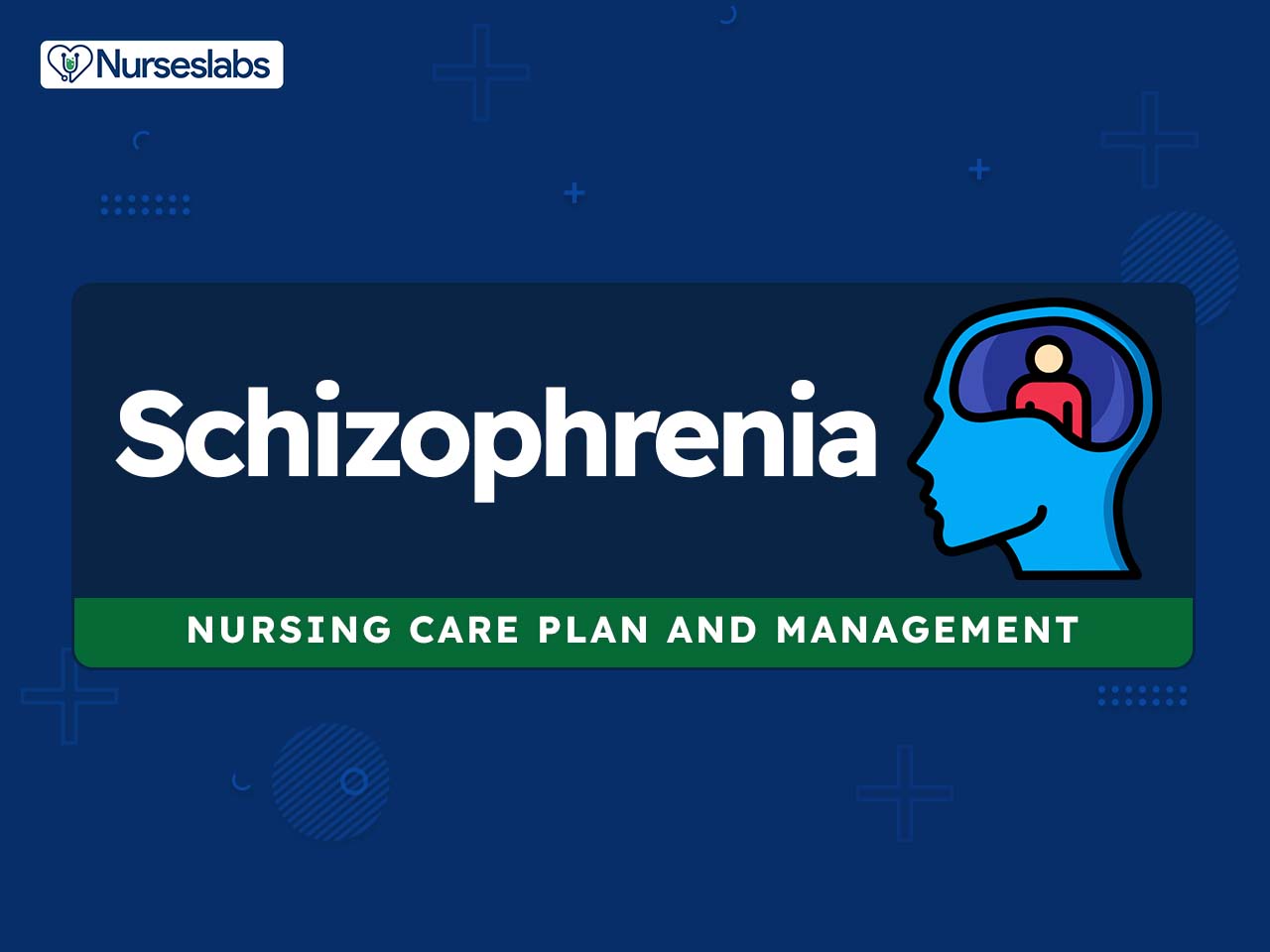

























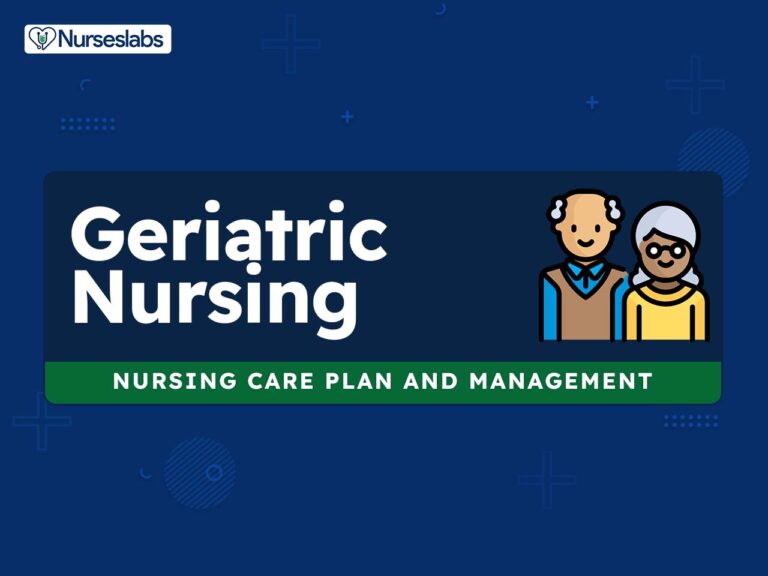


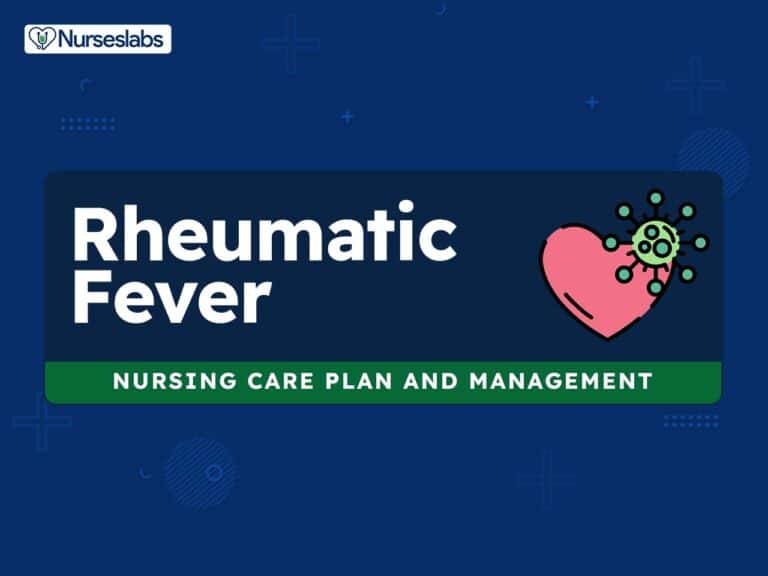
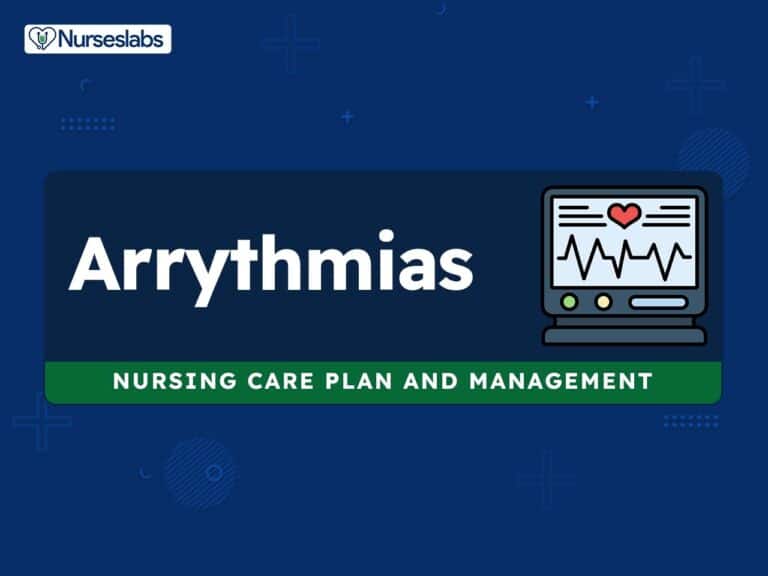

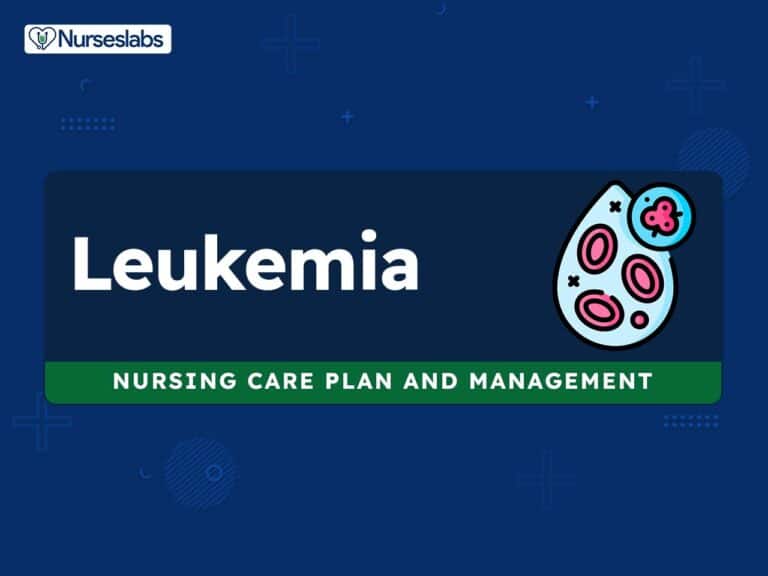
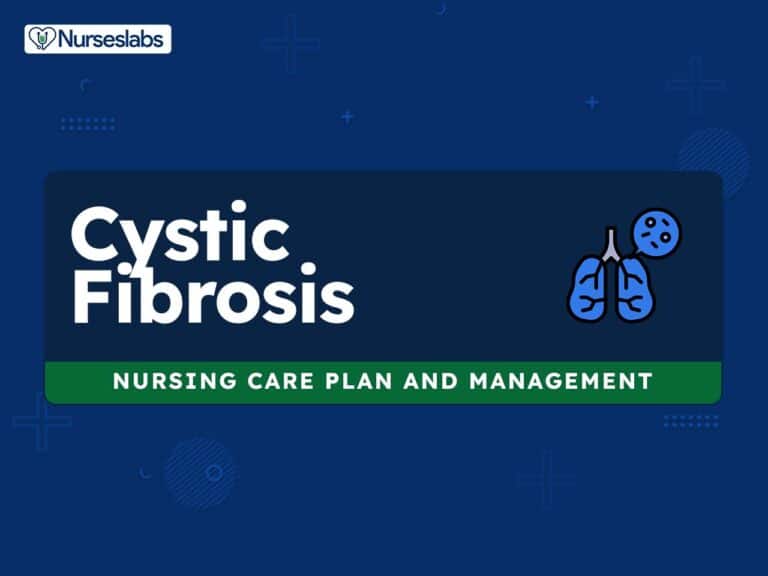

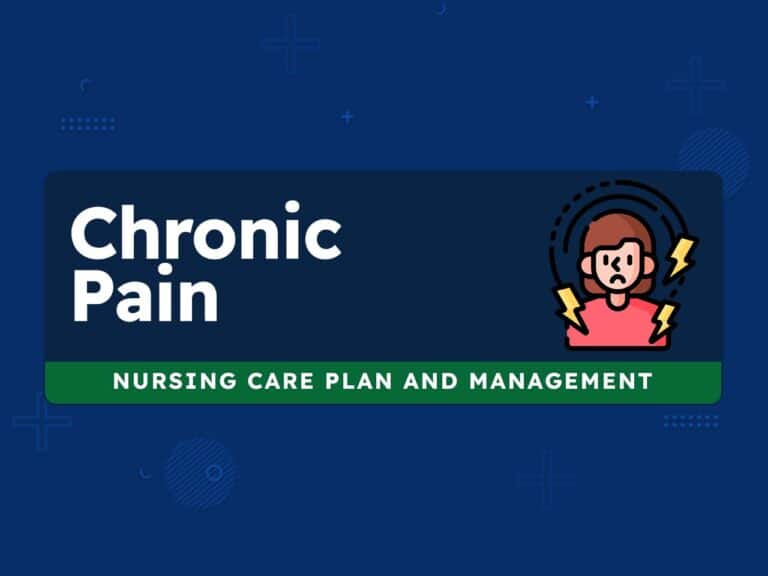
Leave a Comment